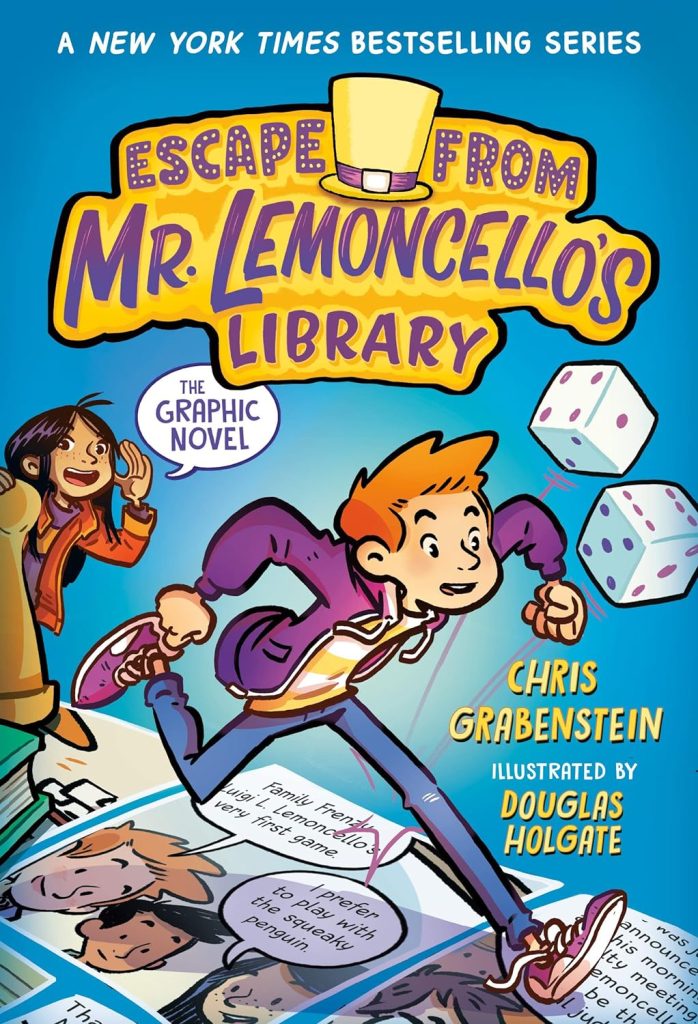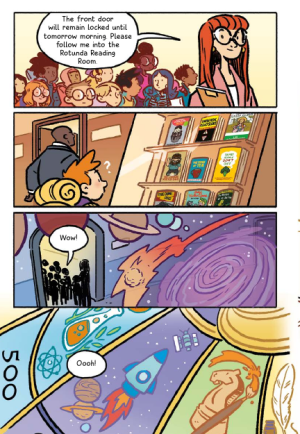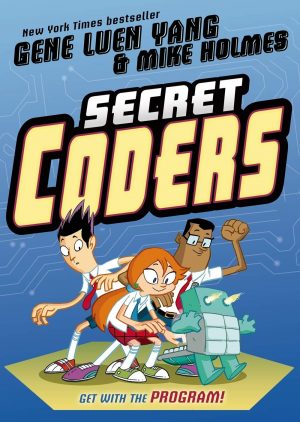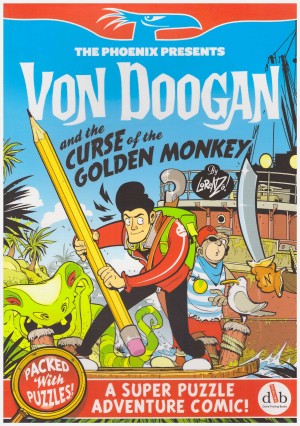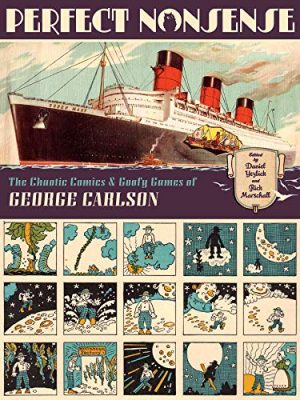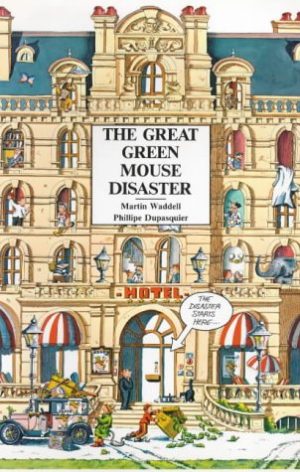Review by Karl Verhoven
Kyle Keeley is a young boy who enjoys quizzes and puzzles, with the console games devised by the mysterious Mr. Lemoncello a particular favourite. He’s looking forward to the opening of a new library in town twelve years after the last one closed.
Chris Grabenstein’s original children’s novel didn’t conceal lifting the basic structure from Charlie and the Chocolate Factory. The dozen children who submit the best essay will be able to spend a night in the new library before the public opening, with the winners selected by the eccentric Mr. Lemoncello. However, just as Roald Dahl’s story was defined not by the structure, but by the invention, so is Grabenstein’s. He incorporates puzzles amid the wonder, and can’t resist a hoary old joke. “I’d like to say a few brief words”, says Mr. Lemoncello as he bounds onstage, “Short. Concise. Underpants.” It’s just as well the games and jokes are consistently engaging, as that sort of personality is absent from the interchangeable younger cast. For a long time only the manipulative rich kid manifests anything other than blandness. They’re all basically friendly, enthusiastic and well meaning, although from diverse cultures.
Do children prefer simple illustrations allowing for maximum accessibility or do they prefer detailed pictures that pull them into a world? This adaptation cries out for the latter, but Douglas Holgate instead opts for simplicity, and the wonder that ought to be present is so often absent. He concentrates on the children rather than the surroundings, although draws them as cheery and likeable, but in so many places the wonder should have been accentuated for a more complete experience. One example is a display of book covers seen on the sample art that later has an importance. Holgate makes the effort to create nine distinguishable covers, but could they not have been emphasised as some are later? The same goes for some of the puzzles, too few of which are visually highlighted.
As the title promises, the story eventually becomes a competition to escape from the library, with all clues able to be solved by research in the library. In some cases readers are invited to solve the puzzles alongside the cast, and clues being supplied visually enables them to be more easily followed. When competition is introduced some previously bland characters develop personalities. Even so, whereas the book until this point has been an all ages read, it’ll take elder children to engage with the clues and solve the puzzles, which are creative.
Beyond the story, there’s a statement as to the value of libraries when too many city officials consider they’re obsolete, and shutting them down saves money. It’s a shortsighted policy that disenfranchises the poor, and while futuristic, Grabenstein’s creative facility is a message about how libraries have value and features ideas for modernising their use. They should be aesthetic as well as functional, and that’s how this version of Escape From Mr Lemocello’s Library falls down. Grabenstein’s creativity carries the adaptation a long way, but greater imagination to the art would have it soar like it ought to.
